
Rheumatoid Arthritis in the Feet
Although rheumatoid arthritis actually attacks multiple bones and joints throughout the entire body, ninety percent of people who actually develop this condition usually do so in the foot or ankle area. Those who develop this kind of arthritis in the feet usually develop symptoms around the toes and forefeet first, before anywhere else. Rheumatoid arthritis appears to have a genetic component. If it runs in the family, then you will be more likely to develop it as well.
Rheumatoid arthritis is an autoimmune disorder in which the body’s own immune system attacks the lining of the membranes surrounding the joints. This causes inflammation of the membrane lining, and the gradual destruction of the joint’s cartilage and even bone.
Some of the most common symptoms that are associated with RA include pain and swelling of the feet. Stiffness in the feet is also another common symptom that people experience. Those who have RA in the feet usually feel the pain in the ball or sole of their feet. This can get to be very painful at times. A person's joints can even shift and become deformed after a period of time.
In order to properly diagnose RA in the feet it is usually necessary for a doctor or podiatrist to evaluate the area. Your doctor will also question you about your medical history, occupation, etc., to determine whether anything in your lifestyle may have triggered the condition. There are a number of tests that may be performed to help diagnose RA such as a rheumatoid factor test, although there is no one single test that will tell you for sure if you have RA. There are different X-rays that can be taken as well to determine if a person has RA in their feet.
There is a range of treatment options for rheumatoid arthritis. Treatment of RA is usually a lifelong process that includes a variety of methods of treatment and therapy. Your doctor can prescribe special shoes that should help with arch support as well as heel support. A physical therapist can help those with this condition learn exercises which will keep their joints flexible. Surgery may be needed to correct some of the issues with the feet, such as bunions, and hammertoes. Fusion is usually the most successful surgical option for rheumatoid arthritis. However, people need to keep in mind that there are some risks associated with these surgeries.
European Company Offers Product that Makes Shoes Fit Better
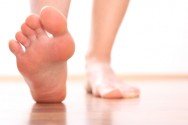 Sizers, an Irish and London based company is making proper fitting shoes trendy. The company has created little inserts for different parts of a shoe to make any shoe a better fit. The product has been know to shorten shoes by one whole shoe size and although Sizers are great for making shoes smaller, the inserts cannot be worn with sandals or open toed footwear.
Sizers, an Irish and London based company is making proper fitting shoes trendy. The company has created little inserts for different parts of a shoe to make any shoe a better fit. The product has been know to shorten shoes by one whole shoe size and although Sizers are great for making shoes smaller, the inserts cannot be worn with sandals or open toed footwear.
Finding a proper fitting shoe is important in reducing injuries and preventing foot problems. For more information contact one of our podiatrists of University Foot and Ankle Center NJ. Our doctors will treat your foot and ankle needs.
Proper Shoe Fitting
A common concern when it comes to foot health, having properly fitted shoes can help prevent injuries to the foot. Out feet affect our posture and gait, which in turn affects the biomechanics and overall bodily structure. With 33 joints, 26 bones, and over 100 ligaments, the potential for serious injury is much greater than one realizes. Although the feet cease growth in adulthood, they still change shape as they mature. Here are come factors to consider when it comes to investing in properly fitting shoes:
- Be sure the shoes fit correctly right away
- Ensure the ball of your foot fits comfortably in the widest portion of the shoes
- Even though they may look fashionable, improperly fitting shoes can either create adverse conditions or exacerbate existing ones you may already have
- Walk along a carpeted surface to ensure the shoes comfortably fit during normal activity
Keeping in mind how shoes fit the biomechanics of your body, keeping properly fit shoes is vitally important. Fortunately, it is not difficult to acquire footwear that fits correctly. Be sure to wear shoes that support the overall structure of your body. Do your feet a favor and invest in several pairs of well-fitted shoes today.
If you have any questions, please feel free to contact our offices located in East Brunswick and Monroe Township, NJ. We offer the newest diagnostic tools and technologies for your foot and ankle needs.
Swimming a Great Way to Stay In Shape While Reducing Pressure on Feet
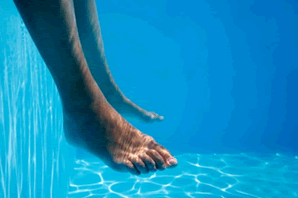 According to Russell Pressler of TriHealth, swimming is a great way to relieve foot pain while staying physically active this summer. Although the average person can experience foot pain any time of year, it is more common for podiatrists to have visitors in the summer due the increased activity the warmer weather brings. For those experiencing a foot injury this summer, it is still possible to remain active this summer with swimming. The activity allows those injured to remain physically fit without adding pressure or overusing the foot.
According to Russell Pressler of TriHealth, swimming is a great way to relieve foot pain while staying physically active this summer. Although the average person can experience foot pain any time of year, it is more common for podiatrists to have visitors in the summer due the increased activity the warmer weather brings. For those experiencing a foot injury this summer, it is still possible to remain active this summer with swimming. The activity allows those injured to remain physically fit without adding pressure or overusing the foot.
Swimming is a great way to exercise the feet. If you have any questions regarding the benefits of swimming on the feet, consider contacting one of our podiatrists from University Foot and Ankle Center, LLC. Our doctors will explain the unique health advantages this activity has and recommend some simple exercises.
Benefits of Swimming and Foot care
Our feet receive the most stress on a daily basis. Walking, running, and long standing contribute to pain and stress on the feet. Swimming helps promote circulation and keep the body feeling great and healthy.
Benefits of swimming:
Improve blood circulation
- Swimming is a good, safe way to get in extra physical activity and improve circulation, without causing further trauma to the feet
Relieve aches or pains
- It takes all the pressure off of them, allowing the feet to relax and recover, and improves blood flow to them.
Circulation overall for diabetics
- Swimming contributes to blood flow, and increase oxygen levels within the body.
Reduce foot inflammation
- Swimming in warm water can increase blood flow and make it easier to move and stretch the afflicted foot. The feet are also exposed in water, giving them much needed air.
Swimming the helpful alternative:
Many people like the elderly and diabetics suffer from weakened muscles and joints. A water sport like swimming will support the body, thus allowing him or her to move freely. Blood flow circulation is a main trigger to tired inflamed feet.
If you have any questions please feel free to contact our offices located in East Brunswick and Monroe Township, NJ. We offer the newest diagnostic and treatment technologies for all your foot and ankle needs.
Swimming and Your Feet
If our feet could talk, they would complain about all the walking, running and long standing we put them through. Our feet deserve a break from the stress put on them, and swimming is a great way to do just that. This activity not only takes all the weight off of the feet, allowing them to relax—there are many other reasons why it is helps take care of feet as well.
Swimming is great for foot health because it improves blood circulation to all the lower extremities. This is especially true for older people or those with injuries, who often cannot exercise as much due to weakened muscles or joints. Water supports much of the weight of the swimmer, relieving aches and allowing him or her to move freely. This gets the blood flowing to the rest of the body, including the feet.
Improving blood flow is also paramount to those with diabetes, who usually have problems with circulation in their feet. Additionally, because of various foot complications, it is often difficult for these people to exercise. Swimming is a good, safe way to get in extra physical activity and improve circulation, without causing further trauma to the feet.
For those that have foot problems due to overuse, swimming can be very beneficial. Athletes and people who are constantly on their feet frequently suffer from injuries like foot tendinitis or ankle sprains. Swimming in cold water can reduce foot inflammation, while swimming in warm water can increase blood flow and make it easier to move and stretch the afflicted foot. Furthermore, because the feet are usually covered during high activity, they tend to sweat a lot. This can cause complications like athlete's foot. Swimming not only allows the feet to be open to the air, it gives them a chance to be cleaned as someone moves around in the water.
Pregnant women who suffer from edema can benefit from swimming, because it allows them to get off their feet for a while. Due to the buoyancy of the human body, they may comfortably float and move around without exerting uncomfortable and often painful pressure on swollen feet and legs. This also lets them to relax sore muscles and joints.
Swimming is, in general, one of the best ways to exercise while protecting and caring for your feet. It takes all the pressure off of them, allowing the feet to relax and recover, and improves blood flow to them. It also makes it easier for someone to stretch and ease an injured foot, which helps heal it and reduces recovery time. If someone has any foot issues at all, or if they simply want to let their feet relax for a while, they should just go swimming.
Margaret Dabbs Foot Advice for the Elderly
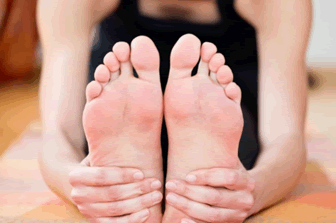 Margaret Dabbs has stated that the key to keeping older feet looking young and healthy is to just give the lower extremities some care. Dabbs states that with age the sweat glands in the feet stop working, making them drier than normal. Elderly individuals should moisturize and file dry skin at least once a week to maintain the hydration levels of the feet. Dabbs also recommends wearing shoes that are wider and more supportive with age.
Margaret Dabbs has stated that the key to keeping older feet looking young and healthy is to just give the lower extremities some care. Dabbs states that with age the sweat glands in the feet stop working, making them drier than normal. Elderly individuals should moisturize and file dry skin at least once a week to maintain the hydration levels of the feet. Dabbs also recommends wearing shoes that are wider and more supportive with age.
Proper foot care is something many older adults forget to consider. For more information, consult with one of our podiatrists of University Foot and Ankle Center, LLC. Our doctors will assist you with all of your podiatric concerns.
The Elderly and their Feet
As we age we start to notice many changes in our body, but the elder population may not notice them right away. Medical conditions may prevent the elderly to take notice of their foot health right away. Poor vision is a lead contributor to not taking action for the elderly.
Common Conditions
Neuropathy – can reduce feeling in the feet, and can hide many life threating medical conditions.
Reduced flexibility – prevents the ability of proper toenail trimming, and foot cleaning. If left untreated, it may lead to further medical issues.
Foot sores – amongst the older population can be serious before they are discovered. Some of the problematic conditions they may face are:
Gouging toenails affecting nearby toe
Shoes that don’t fit properly
Pressure sores
Loss of circulation in legs & feet
Edema & swelling of feet and ankles
Susceptible Infections
Diabetes and poor circulation can cause general loss of sensitivity over the years, turning a simple cut into a serious issue.
If you have any questions, please feel free to contact our offices in East Brunswick and Monroe Township, NJ. We offer the newest diagnostic and treatment technologies for all your foot and ankle needs.
Understanding Biomechanics of the Feet Can Prevent Running Injuries
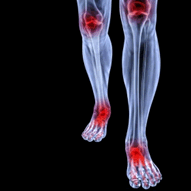 Running is an important daily routine for many people; however, runners should keep in mind the biomechanics of the foot to prevent running injuries. The metatarsal bones are often regularly injured during the foot to ground impact when running with metatarsalgia, inflammation on the bottom of the foot. The metatarsal bones are located in the forefoot and there are five, connecting to the mid-foot to the toes. The heaviness of the body and the impact on the foot result in symptoms such as sharp, stabbing, burning pain. Injury to the metatarsals can be reduced with smart training practices, proper fitting shoes, orthotics, and using recovery days to rest the feet.
Running is an important daily routine for many people; however, runners should keep in mind the biomechanics of the foot to prevent running injuries. The metatarsal bones are often regularly injured during the foot to ground impact when running with metatarsalgia, inflammation on the bottom of the foot. The metatarsal bones are located in the forefoot and there are five, connecting to the mid-foot to the toes. The heaviness of the body and the impact on the foot result in symptoms such as sharp, stabbing, burning pain. Injury to the metatarsals can be reduced with smart training practices, proper fitting shoes, orthotics, and using recovery days to rest the feet.
Biomechanics of the feet can help you understand how to prevent injury and help doctors treat your foot and ankle ailments. If you have any concerns contact one of our podiatrists of University Foot and Ankle Center of New Jersey. Our doctors will treat your foot and ankle needs.
Biomechanics in Podiatry
Podiatric biomechanics is a particular sector of specialty podiatry with licensed practitioners who are trained to diagnose and treat conditions affecting the foot, ankle and lower leg. Biomechanics deals with the forces that act against the body causing an interference with the biological structure and focuses on the movement of the ankle, the foot and the forces that interact with them.
A History of Biomechanics
- Biomechanics dates back to the BC era in Egypt where evidence of professional foot care has been recorded.
- In 1974 biomechanics gained a higher profile from the studies of Merton Root, who claimed that by changing or controlling the forces between the ankle and the foot, corrections or conditions could be implemented to gain strength and coordination to the area.
Modern technology improvements are based on past theories and therapeutic processes providing a better understanding of podiatry concepts for biomechanics. Computers provide accurate determinations about the forces, moments and patterns of the foot and lower legs with the most important information captured.
Advances in materials and more awareness of biomechanics have developed enhanced corrective methods, offering further options for foot-related injuries. Understanding foot biomechanics can help improve and eliminate pain, stopping further stress to the foot.
If you have any questions please feel free to contact our offices located in New Jersey. We offer the newest diagnostic tools and technology to treat your foot and ankle needs.
Flip Flops not the Best Choice of Summer Footwear
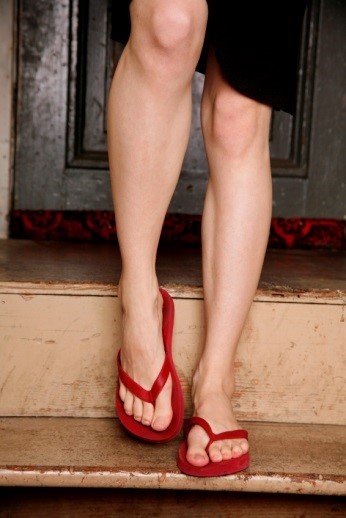 Basic foam flip flops are often a staple in many summer wardrobes. Many experts agree, however, that flip flops should be left for lounging around the pool. Often times flip flops and other summer sandals are too flat and do not properly hold the foot place. Support is typically lacking, and because the feet are not strapped in, slipping causes the foot to tense; allowing conditions such as calluses, blisters and corns to form. Summer sandals should have an adjustable strap to secure the foot into place to avoid slipping.
Basic foam flip flops are often a staple in many summer wardrobes. Many experts agree, however, that flip flops should be left for lounging around the pool. Often times flip flops and other summer sandals are too flat and do not properly hold the foot place. Support is typically lacking, and because the feet are not strapped in, slipping causes the foot to tense; allowing conditions such as calluses, blisters and corns to form. Summer sandals should have an adjustable strap to secure the foot into place to avoid slipping.
Flip flops are not always the best choice of footwear. If you have any questions concerning the feet, consult with one of our podiatrists of University Foot and Ankle Center. Our doctors will answer any of your foot- and ankle-related questions.
Flip-Flops and Feet
When the weather starts warming up, people enjoy wearing flip-flops. Flip-flops are comfortable, stylish, and easy to slip on and off, perfect for any summer beach goer. However, these shoes can cause harm to the feet.
How Can Flip-Flops Affect Me Long-Term?
- Ankle problems
- Hip problems
- Lower back problems
- Pain in the balls of the feet
- Problems with foot arches
- Changes in the way you walk
Are there injuries associated with flip-flops?
Yes. Since flip-flops are relatively weak and do not provide the same amount of support as sneakers, people who wear flip-flops are more susceptible to injuries. On top of that, the open nature of the shoe makes your feet more prone to other problems, such as cuts and even infections. Common injuries and ailments include:
- Sprained ankles
- Blisters
- Infections
- Cuts and Scrapes
I like wearing flip-flops, are there safe alternatives?
When buying flip-flops, try to find ones that have sturdy soles and are made of high quality materials that will support for your feet. These flip-flops will cost more, but will also last longer as a result.
For more information about Flip Flops, follow the link below.
If you have any questions, please contact our offices located in East Brunswick and Monroe Township, NJ. We offer all the newest in diagnostic and treatment technologies for all your foot and ankle conditions.
Flip-flops and Feet
Flip-flops are often a popular choice of footwear for their ability to allow your feet to take in open air. As well as, for the freedom of movement they allow your toes. They are easy to slip on and can be worn with virtually any style of clothing. Flip-flops, however, despite their many benefits, can be detrimental for your foot health.
Despite their comfortableness, the frequent wearing of flip-flops can create problems in the lower body over time. Issues mainly stem from the fact that people walk differently in flip-flops compared to other footwear, such as sneakers. This is due to a change in one’s natural gait, which therefore creates stress in different parts of the body while simultaneously throwing off the body entirely. Problems can also arise in the arches and balls of the feet, as flip-flops provide little to no support to these areas.
Aside from long-term problems, flip-fops can also create short-term issues as well, such as ankle sprains and blisters. Weak materials that are flexible and bendable are generally used to manufacture flip-fops; these materials make a wearer prone to both trip and injure their ankles. Flip-flops can create blisters as the material rubs against the foot. People are much more at risk for infection while wearing flip-flops due to their openness; this also makes it easier to scrape and cut the foot since there is a lack of protection. If these cuts are left untreated and uncovered, the risk then becomes greater.
To prevent the aforementioned occurrences, purchase a pair of flip-flops that offer significant protection. The soles of the flip-flops should not be floppy, but sturdy and firm, and should not significantly bend or wiggle when lifted from the floor. Flip-flops made of high-quality materials will not be affected by this problem. While higher quality flip-flops may be more expensive, they will last longer and provide better protection compared to a cheaper pair. Brand name flip-flops sold from a quality manufacturer are a dependable option.
There is no problem in wearing your favorite pair of flip-flops so as long as you do not wear them daily or for extended periods of time. Flip-flops should be replaced every 3-4 months to ensure that they provide your feet with the best protection.
Heavily Cushioned Maximalist Running Shoes to become the Next Big Thing
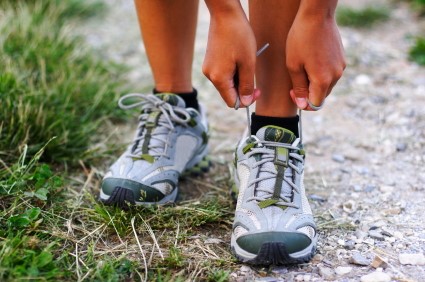 According to Sara Germano of the Wall Street Journal, there has been an increase in running shoe sales for activities that do not include running. The running shoe market is currently one of the highest selling shoe markets in the industry. Although running shoes are made for that specific activity, many people are wearing them for fashion, walking, or basically anything but running. Well-known brands such as Nike, Adidas, and Reebok are all coming out with fashion focused running shoes that are actually made for the everyday individual. Despite this new trend in wearing running shoes to walk, there is still a high demand of runners using the shoes for their actual purpose.
According to Sara Germano of the Wall Street Journal, there has been an increase in running shoe sales for activities that do not include running. The running shoe market is currently one of the highest selling shoe markets in the industry. Although running shoes are made for that specific activity, many people are wearing them for fashion, walking, or basically anything but running. Well-known brands such as Nike, Adidas, and Reebok are all coming out with fashion focused running shoes that are actually made for the everyday individual. Despite this new trend in wearing running shoes to walk, there is still a high demand of runners using the shoes for their actual purpose.
For more information about walking shoes versus running shoes consult with one of our podiatrists from University Foot and Ankle Center, LLC. Our doctors can measure your feet to determine what your needs are and help you find an appropriate pair of footwear.
Foot Health: The Differences between Walking & Running Shoes
There are great ways to stay in shape: running and walking are two great exercises to a healthy lifestyle. It is important to know that running shoes and walking shoes are not interchangeable. There is a key difference on how the feet hit the ground when someone is running or walking. This is why one should be aware that a shoe is designed differently for each activity.
You may be asking yourself what the real differences are between walking and running shoes and the answers may shock you.
Differences
Walking doesn’t involve as much stress or impact on the feet as running does. However, this doesn’t mean that you should be any less prepared. When you’re walking, you land on your heels and have your foot roll forward. This rolling motion requires additional support to the feet.
Flexibility – walking shoes are designed to have soft, flexible soles. This allows the walker to push off easily with each step.
If you have any questions, please feel free to contact our offices located in East Brunswick and Monroe Township, NJ. We offer the newest diagnostic and treatment technologies for all your foot care needs.
Read more about The Differences between Walking and Running Shoes
Foot Health: The 4 Differences between Walking and Running Shoes
Both running and walking are great exercises, but should a person wear the same shoes for running and for walking? The answer is no, because there is a difference between the way that a person’s feet hit the ground when they are walking and when they are running. Therefore, the shoes for each activity are designed totally different. Before you begin any exercise program it is always recommended that you speak with your doctor.
Walking is a low impact exercise that is often recommended by doctors to their patients. Walking is the simplest exercise there is, but it still requires some degree of preparation. If you think about walking and how your feet strike the ground as you walk along, you will notice that your heel hits the ground first and then your foot continues to roll forward until your next step begins. Because of this rolling motion, walking shoes are designed to be more flexible than running shoes. The flexibility helps the walker to push off with each step taken.
Another thing about walking shoes is that your heel hits the ground first, therefore it absorbs most of the shock. This is why walking shoes need to have a beveled or angled heel. The angle of the heel helps to absorb some of the shock instead of putting all of the pressure on the ankles. This is especially important for speed walkers as their feet will hit the ground twice as often as the normal walker.
When people decide to run as a hobby or for their health, they must first realize that running is a high impact exercise that if not done with the proper equipment, could cause damage to their feet and legs. Running shoes are designed to be more light weight and to have thicker soles. The thicker soles act as shock absorbers for the rest of the body. For this reason alone it is never recommended that a person wear walking shoe to run in. However, it's fine if you want to walk in running shoes. Walking shoes most often do not have the proper arch support that runners do.
One very important thing to remember is that a proper fit can make or break a runner or a walker. If a runner or walker’s shoes are too big, their feet will slide back and forth inside the shoe and cause blisters. What ever your sport, running or walking, the right equipment can make all of the difference in the world.
Blog Archives
- May 2024
- April 2024
- March 2024
- February 2024
- January 2024
- December 2023
- November 2023
- October 2023
- September 2023
- August 2023
- July 2023
- June 2023
- May 2023
- April 2023
- March 2023
- February 2023
- January 2023
- December 2022
- November 2022
- October 2022
- September 2022
- August 2022
- July 2022
- June 2022
- May 2022
- April 2022
- March 2022
- February 2022
- January 2022
- December 2021
- November 2021
- October 2021
- September 2021
- August 2021
- July 2021
- June 2021
- May 2021
- April 2021
- March 2021
- February 2021
- January 2021
- December 2020
- November 2020
- October 2020
- September 2020
- August 2020
- July 2020
- June 2020
- May 2020
- April 2020
- March 2020
- February 2020
- January 2020
- December 2019
- November 2019
- October 2019
- September 2019
- August 2019
- July 2019
- June 2019
- May 2019
- April 2019
- March 2019
- February 2019
- January 2019
- December 2018
- November 2018
- October 2018
- September 2018
- August 2018
- July 2018
- June 2018
- May 2018
- April 2018
- March 2018
- February 2018
- January 2018
- December 2017
- November 2017
- October 2017
- September 2017
- August 2017
- July 2017
- June 2017
- May 2017
- April 2017
- March 2017
- February 2017
- January 2017
- December 2016
- November 2016
- October 2016
- September 2016
- August 2016
- July 2016
- June 2016
- May 2016
- April 2016
- March 2016
- February 2016
- January 2016
- December 2015
- November 2015
- October 2015
- September 2015
- August 2015
- July 2015
- June 2015
- May 2015
- April 2015
- March 2015
- February 2015
- January 2015
- December 2014
- November 2014
- October 2014
- September 2014
- August 2014
- July 2014




